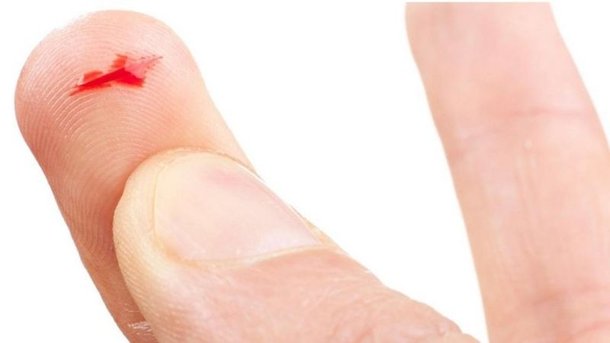Quem se lembra da cena do filme Lua Nova, em que a personagem Bella Swan, ao receber um presente de aniversário da família do seu namorado vampiro, abre a embalagem e se corta com o papel? Os momentos seguintes ficaram marcados na mente dos fãs ao redor do mundo: muito sangue e uma confusão familiar digna de um episódio de Casos de Família. E tudo por conta de um corte de papel.
Combinação tenebrosa
 (Fonte: Thinkstock)
(Fonte: Thinkstock)
O motivo de tanta dor é muito simples. As nossas mãos são incrivelmente sensíveis à dor e as bordas dos papéis são surpreendentemente irregulares. Essa terrível combinação é a principal causa do nosso sofrimento. A gente quase não percebe, mas as pontas dos nossos dedos são mais delicadas do que qualquer outra parte do corpo. Isso acontece porque ao longo dos anos, durante o processo evolutivo, elas foram sendo adaptadas para sentir a sensação do toque através das terminações nervosas. De acordo com especialistas, as mãos e os dedos humanos carregam uma alta concentração de células nervosas chamadas de nociceptores, que respondem a sinais liberados por células danificadas. Por conta disso, os machucados nessa área podem causar agonia intensa — quanto mais forte e mais rápido for o sinal enviado ao cérebro por meio dos nociceptores, mais rápida e intensa será a resposta — a dor. Que azar.
Os tão chatinhos cortes de papel acionam, principalmente, os nociceptores mecânicos, que detectam danos celulares causados por cortes e perfurações, em oposição aos danos causados por temperaturas extremas, por exemplo. É uma espécie de mecanismo de segurança. Em menor grau, os cortes de papel também podem ativar nociceptores que são sensíveis à irritantes químicos, como alvejantes usados para clarear o papel. Essas células nervosas também podem gerar sensações de coceira em torno do machucado.
O papel também tem culpa

Olhando de longe, o papel não parece ser um objeto cortante, certo? Temos a impressão de que as bordas de suas folhas são retas e suaves. Mas, microscopicamente, podemos perceber que as bordas do papel são parecidas com uma faquinha de serra — e quando entram em contato com as pontinhas sensíveis dos dedos, rasgam e dilaceram a pele, atingindo mais terminações nervosas em comparação com objetos cortantes mais precisos, por exemplo.
Outro motivo para essa dor incomodar tanto é a profundidade do machucado. Cortes mais fundos acionam os mecanismos de defesa do corpo, como a formação de crostas e a coagulação de sangue, que ajudam no processo de cicatrização do ferimento. Já o corte de papel é superficial e atinge apenas os nociceptores. Dessa forma, os mecanismos de defesa naturais do corpo demoram mais tempo para serem acionados, deixando as terminações nervosas expostas por mais tempo.
E ainda tem mais essa! A sua própria mente pode ser a causa da dor
 (Fonte: Shutterstock)
(Fonte: Shutterstock)
Acredite se quiser, ainda tem mais essa! De acordo com a revista Scientific American, existe um elemento psicológico muito forte nos cortezinhos de papel — a dor pode ser mais intensa simplesmente por ter sido causada por algo inofensivo e muito menor do que nós. E não é que nossa mente é nosso próprio inimigo mesmo?
Agora que você já sabe por que esses machucados causados por papéis incomodam tanto, vale a pena redobrar o cuidado ao ler um livro ou folhear uma revista. Caso aconteça, não se esqueça: curativo no dedo para não deixar as terminações nervosas, mais nervosas ainda.
Fonte: MegaCurioso.